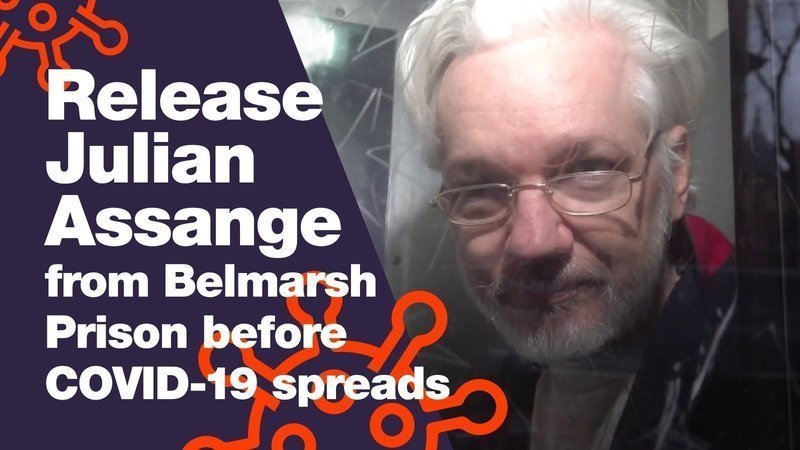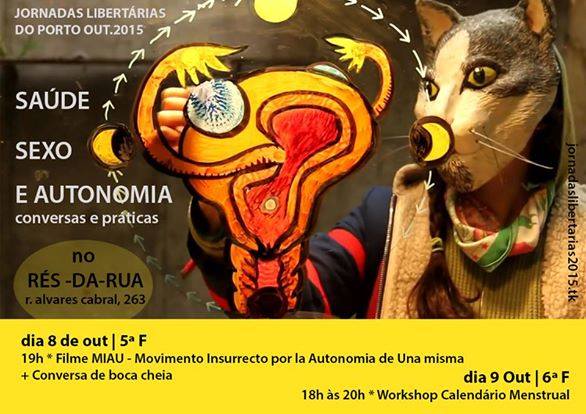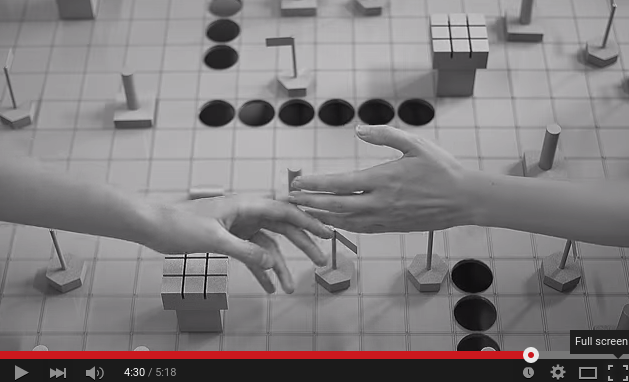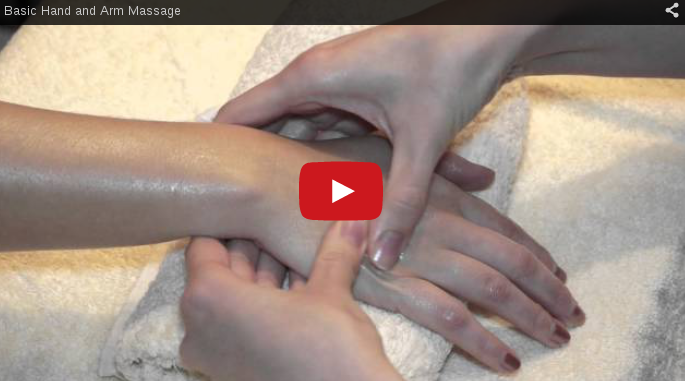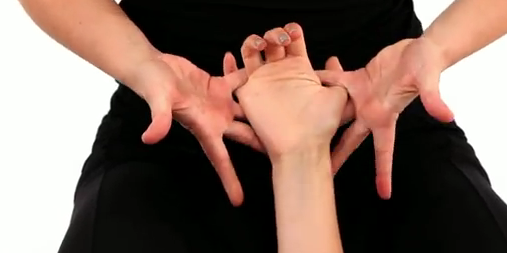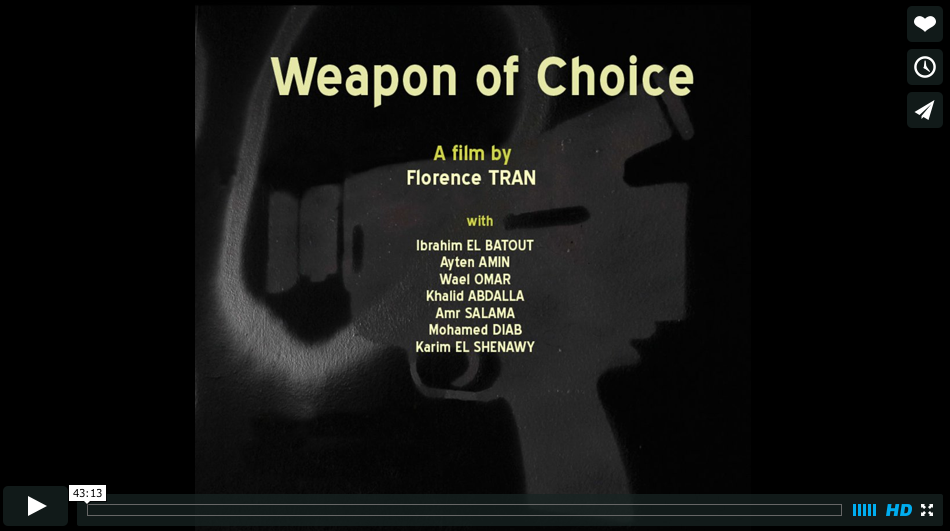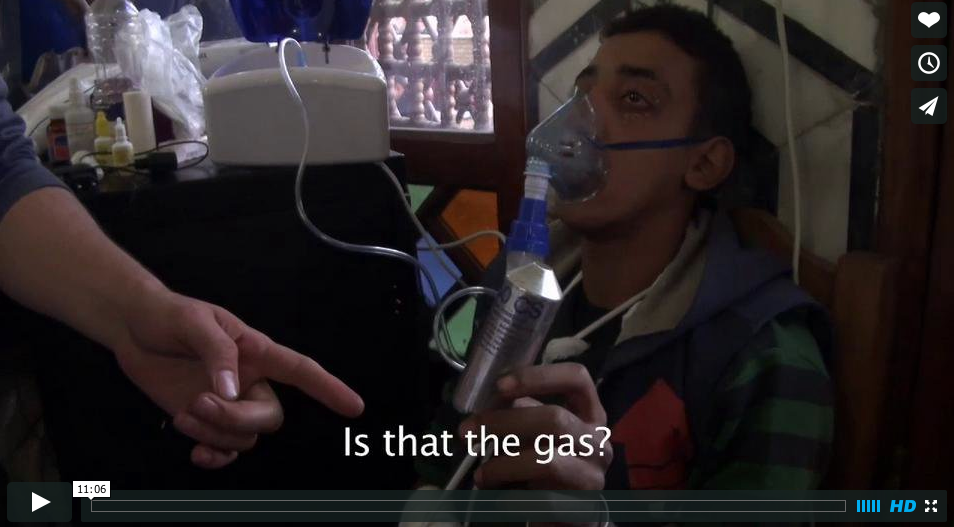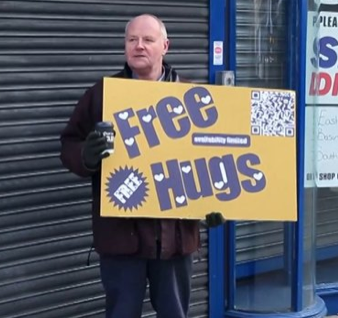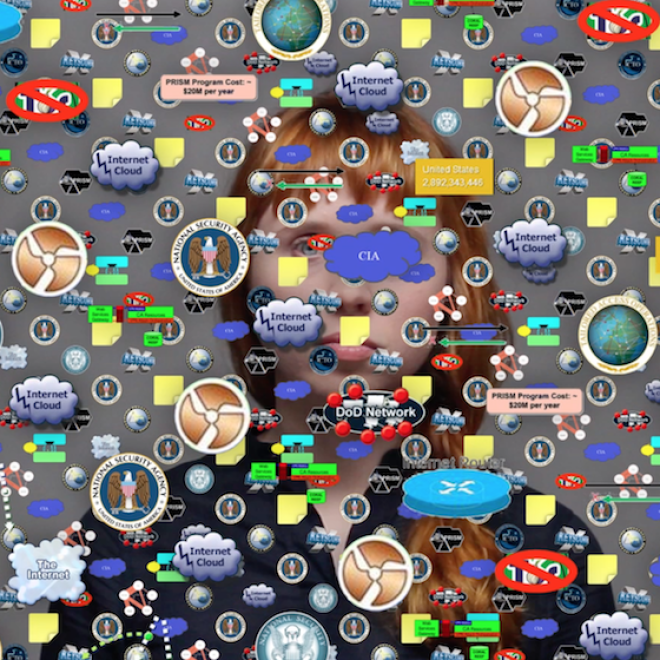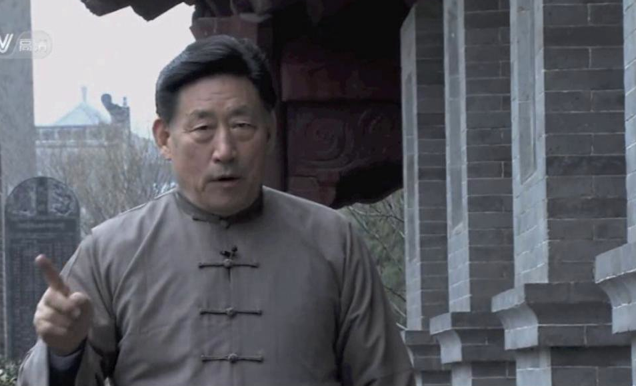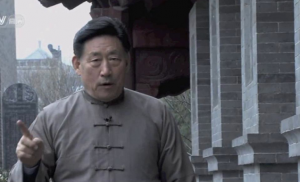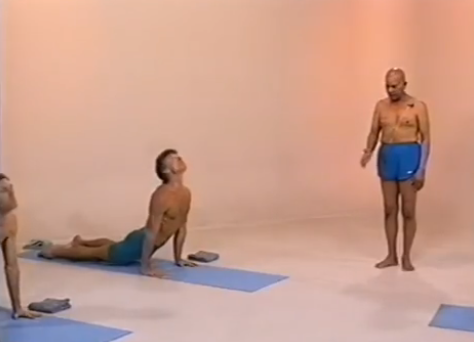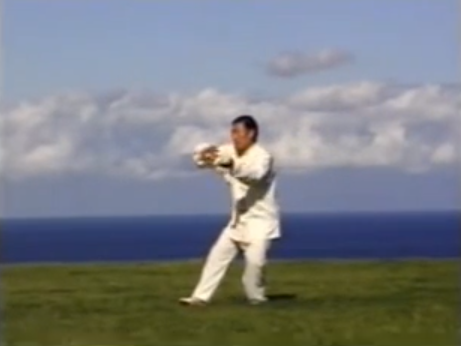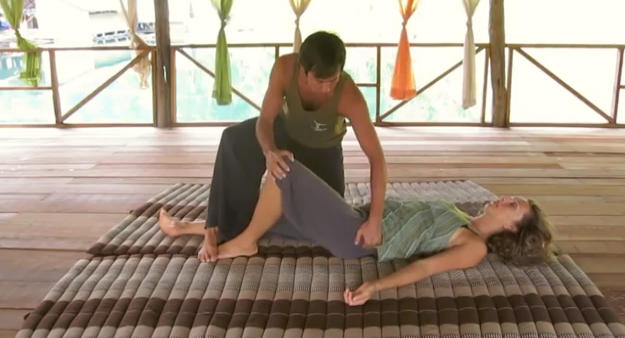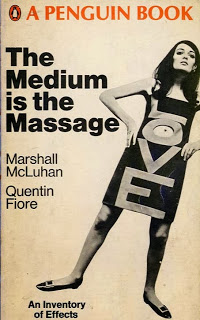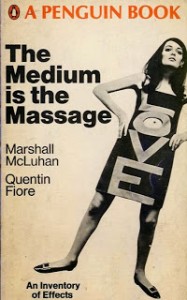
Taking media analyst Marshall Mc Luhan’s famous theoretical pun that “the medium is the massage” almost to the letter as a staring point, chinese artist Yin Aiwen designs a performance-installation in which massage plays a central part, until the initial statement appears to be reversed, and “the massage” re-installs itself as “the medium”. A true human massage ultimately appears as a possible antidote to the panoply of psycho-physical pains quite willingly (=unconsciously?) inflicted to oneself by the modern human, otherwise “massaged” into a disembodied alienation by the soft, gentle, falsely-caring mass media machinery.
I as a masseuse happen to think highly about massage, and this work strikes me as interesting. I may have a few hesitations about the piece (mostly about the dispositive), still I feel it is conveying important, inspiring, and potentially emancipative material.
The dispositive is as follow: Yin Aiwen gives a 15 minutes a chinese medical massage to a participant installed in a massage chair, at the headset of which is installed a tablet playing a video-montage of clips from mass culture. A voice over reads, in a more or less relaxing, therapeutical tone, a text exploring the relationship between media, machines (computers specifically) and the receiver’s body, their pain, their vitality, all along questioning them, engaging them in instructive feedback loops with their sensations. A small audience is invited to watch the session.
It is almost a clever piece of reverse engineering, Yin Aiwen giving a massage and deducing, from the informations she collects at her expert fingertips, the design of the “end product”, the end product here being the human being in the capitalist world… So that she could then re-build this human being, re-model them, correct them, free them from this socio-economical-mechanical blocking ?
I have not assisted to the performance myself, so my judgment and impressions are of course limited. I only watched the video documentation, which I find was already quite an experience, and I strongly advise you to watch it ! As for the text, for which I post below a full transcript, it contains some gems and, in the light of my own experience, it speaks a lot of truth, however in somewhat dark aspects of it.
In the end, the piece altogether appears to be slightly too demonstrative, still too spectacular to my taste, authoritarian and somewhat cruel for the receiver (!) but Yin Aiwen completely admits it, for it serves her purpose : “The harsh, ruthless massage has no interest in your pleasure”, she writes. It gets the “message”/”massage” across…
However I believe this “message” is in essence one that emerges from massage during a private session. Indeed, a good massage will “inform” you of your condition. Here and now, and before, and even possibly give you an insight on after. It will move and question those layers of histories embedded in your flesh, sometimes it will allow images, memories, dreams, fantasies, to flash behind your eyelids, without a video being necessary. It will present to your consciousness, at your own pace, material very personal, possibly life improving; hints, cues, directions given by your senses to finding yourself again, connecting with yourself so that you be again the one “living” rather than the one being “operated” by. This way of the massage is known, and listened to, by many massage artists, practicians and therapists.This piece speaks to me of the substance of which good massage sessions are made of.
Find out more about the Massage is the medium by Yin Aiwen here.
Welcome to the plug in systems.
Your body will be massaged in a few seconds,
Please relax…
You are going to experience a story that is specifically made by you, enjoy.
Please relax…
Some cream will be applied to your neck and shoulders,
It’s going to be fine,
Things will be nice and smooth…
Good
That’s right
After your fifteen minutes massage, you’ll feel free like never before.
Now your neck is being touched, does it hurt ?
Have you noticed this type of pain before ?
I know you work in front of the computer a lot, picture that scene :
Do you see your face with the screen light on, glowing in the dark, just like everyone else ?
You work late quite often, don’t you ?
The quiet night… Only the sounds of your keyboard is in company.
Do you feel those blocks here ? It hurts a lot, doesn’t it ?
You must be the kind of person that is constantly thinking, probably getting annoyed by it sometimes.
Your tired brain creates this block.
It’s in the way in which your brain gets all the supplies.
So when it gets blocked, the supplies – oxygen, nutrients, and blood – will have difficulties to get into your brain.
Tiredness must be an old friend of yours.
That’s why you need this massage :
To clear out the scene, to make it work again…
Computers change you, starting from your hands,
Grow into your chest, get into your back, then to your neck, and eventually, to your brain…
I know you thought that your body was irrelevant, didn’t you ?
Otherwise, you wouldn’t let it be like this…
As if it’s just the operator of your mind, and you thought your mind is eternal,
travelling in the infinite universe, pluging into the mortal nervous circuits, being free…
The strain muscle you have, many people have it nowadays.
It used to be a professional injury for people doing paperwork.
But nowadays, almost everyone has it.
Even children have it.
See how stiff your front neck is.
It indicates the condition of your chest
Like here, the end point of your chest muscles, and the starting point of your arms’…
Do you feel how it goes all the way down to the hand that types the keyboard ?
Your injured body has become the burden of your digital soul.
It’s ok, many people thought so.
People say fickleness is the theme of society now
Streaming tweets, 24/7
Optical transmission, day and night…
The facebook « one for all, all for one » utopia, right in front of your eyes…
Your fingers dance on your keyboard non-stop
Your Iphone camera flashes at every corner of your life
Your exciting brain on wire, all season…
You are so willing to share yourself to the world,
That you are pleased to shatter yourself into a hundred and forty pieces…
All the consequences then fall on your back,
Sink into your neck, permeate your brain…
They change you so quietly that you thought it’s your choice.
Do you see your face with the screen light on, glowing in the dark, just like everyone else ?
Physical pain is easy to forget of course.
That’s why you constantly hurt yourself.
Do you see how badly you have hurt yourself ?
It’s so painful it almost becomes emotional.
Feel it…
Feel what has happened to you…
Feel what the medium has done to you…
Think about what you have done to yourself…
Can this pain that you have done to yourself make you regretful ?
The medium is the massage.
The sweet exciting kind of massage, catering to your every wish,
Manufacturing your desire, regulating your recognition,
Until you can’t tell if there is another kind of life anymore…
All you can see is what has been given,
ALL that has been given is ALL you can imagine…
In the world of cyber capital
Everything is soft, fluffy, gentle, fulfilling…
Like a massage.
Satisfying your longing to be cared for, to feel special, to feel loved…
All you need to do is to pick a set that is all designed.
Yes, the special design, only for you…
And a million duplications of you.
You think this massage is made for you, don’t you ?
Like this, it happens for a reason,
Reasons that are based on your condition
But so many people have the same condition,
The same analysis of you…
I did it to dozens and dozens and dozens of people.
You are the same, you are all made the same.
Together you are precious, together you are special,
Together you are unique, together you are alone.
It’s not enough that machines code your life.
It’s not enough that they design every inch of your life.
You will only be perfect when its perspective becomes yours,
Your only perspective.
Only then you will have your true freedom :
Boundless, painless, senseless, heartless…
Do you see your face with the screen light on, glowing in the dark, just like everyone else ?
In this optical fiber world, you are transcendant.
Your face is flattened after the speed of light.
You can barely see others faces, and others can barely see yours.
So you talk as loud as you can, in one way or another,
So you can grab as many hurried travellers as possible…
After all, the mass man needs the proof of his living…
So fifteen minutes of attention is already an extravagance.
If possible a massive killing weapon is in favour.
So taking a massage to you becomes a very odd, even uncomfortable idea, doesn’t it ?
You needed to have so many decent reasons to give yourself in, didn’t you ?
But you need this massage.
Through others hands, it reminds you that you are still human.
Through the pain, it reminds you that you are not entirely numb, yet.
You are more than the electrical signals from your neurons.
Your communication with people is more than a faceless P2P transmission.
The massage is the medium.
This person behind you, who’s touching you, trying to find out what happened to you,
Do you see her as a human ?
Two euros slide in a coin slot, and a piece of hamburger jumps out…
She’s not a walking commodity, providing catalogue services,
But that’s why you felt uncomfortable about the idea, isn’t it ?
It’s a better design that pryes your heart with a decent distance…
Have you noticed the silent communication between you and her ?
Or are you just struggling to fight with your body, learning about yourself ?
It’s ok, she knows what you have been through.
Underneath the fingertips size of skin that she connects to you, your trembling muscles are shedding a tear…
She knows.
The pain you’re experiencing is the last mayday your body screams out to you, do you hear that ?
Feel it…
Feel your blood running through your body…
So powerful, as if you are alive again…
Feel this warmth inside, as if you are being cared for…
Feel what is happening now…
Feel where they came from, and where they will go…
Feel it, before this massage comes to an end…
I would like to thank you for dedicating yourself to this experiment.
I hope it means something to you.
Before you unplug yourself,
Please take a deep breath,
And I would like to ask you : Do you think I am human ?

